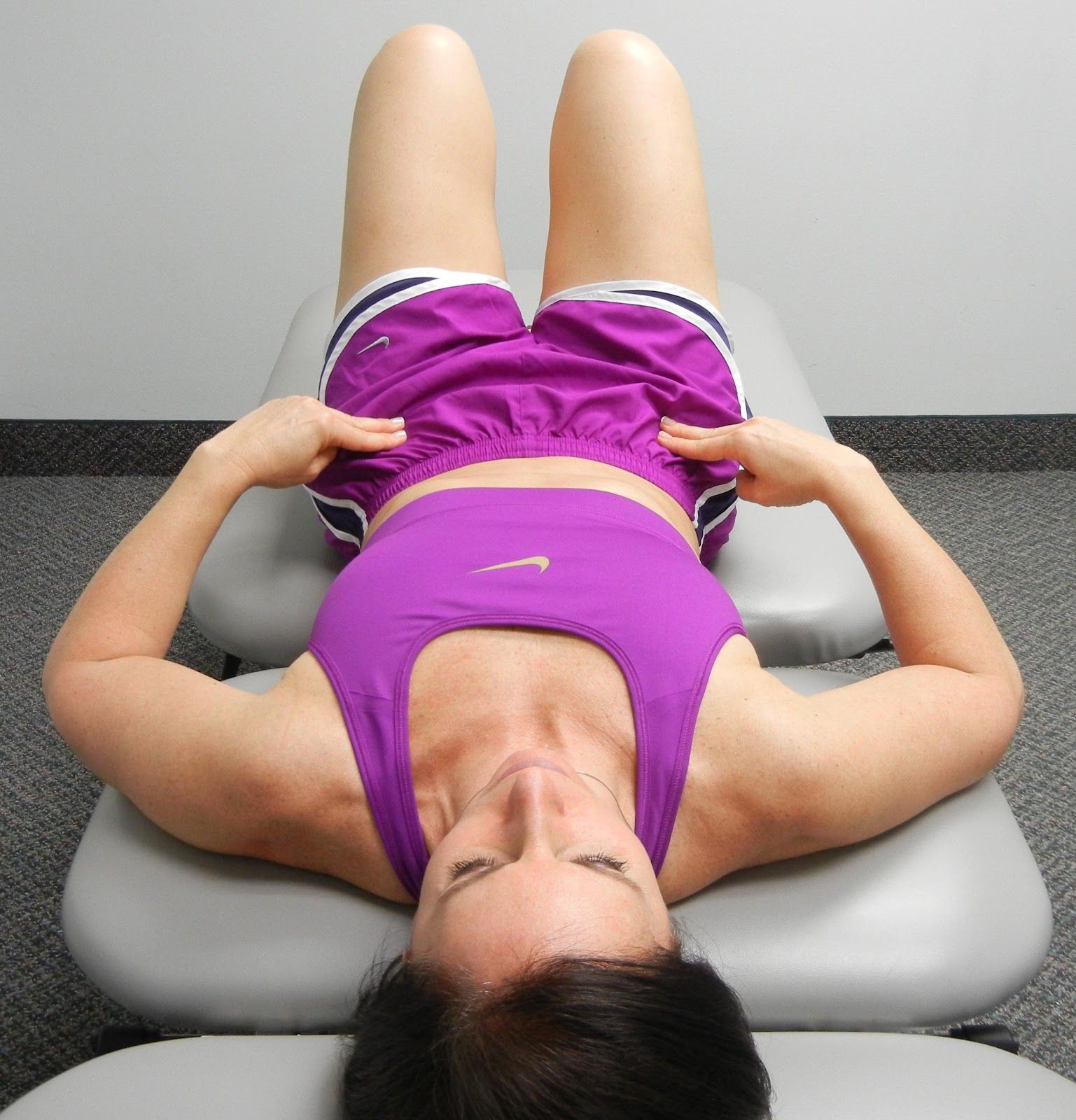Retraining Exercise to Restore Symmetrical 12 to 6 o’clock
Patient is positioned supine with hips and knees flexed and feet hip width apart.
The patient palpates the ASISs with their fingers or thumbs to assess for symmetry of the ASISs in the frontal plane before they initiate movement. The therapist observes the ASISs and gives the patient verbal cues if needed to level the ASISs before movement is initiated. The most common initial instruction to the patient is to bring the R ASIS up superiorly in order for the ASISs to start from a position of symmetry before movement begins.
The patient is then instructed to inhale as they roll the pelvis down towards 6 o’clock attempting to keep the ASISs level by continuing to monitor with their fingers. If during the initial movement assessment it was found that the R ASIS moved farther inferiorly than the L ASIS the therapist instructs the patient to focus on pushing the L ASIS a little further inferiorly to keep the ASISs level in the frontal plane.
The patient is then instructed to exhale and roll the pelvis up towards 12 o’clock while still maintaining contact at the ASISs. If during the initial movement assessment it was found that the L ASIS moved farther superiorly than the R ASIS, the therapist instructs the patient to focus on drawing the R ASIS up further superiorly in order to keep the ASISs level. The patient repeats the movements toward 6 and 12 o’clock 6 to 8 times trying to maintain symmetry by continuing to monitor at the ASISs and making any adjustments as needed.
The goal is for the patient to be able to roll the pelvis towards 6 and 12 o’clock with symmetry of the ASISs maintained throughout the full range of motion and eventually without the patient having “to think” about maintaining this symmetry.

